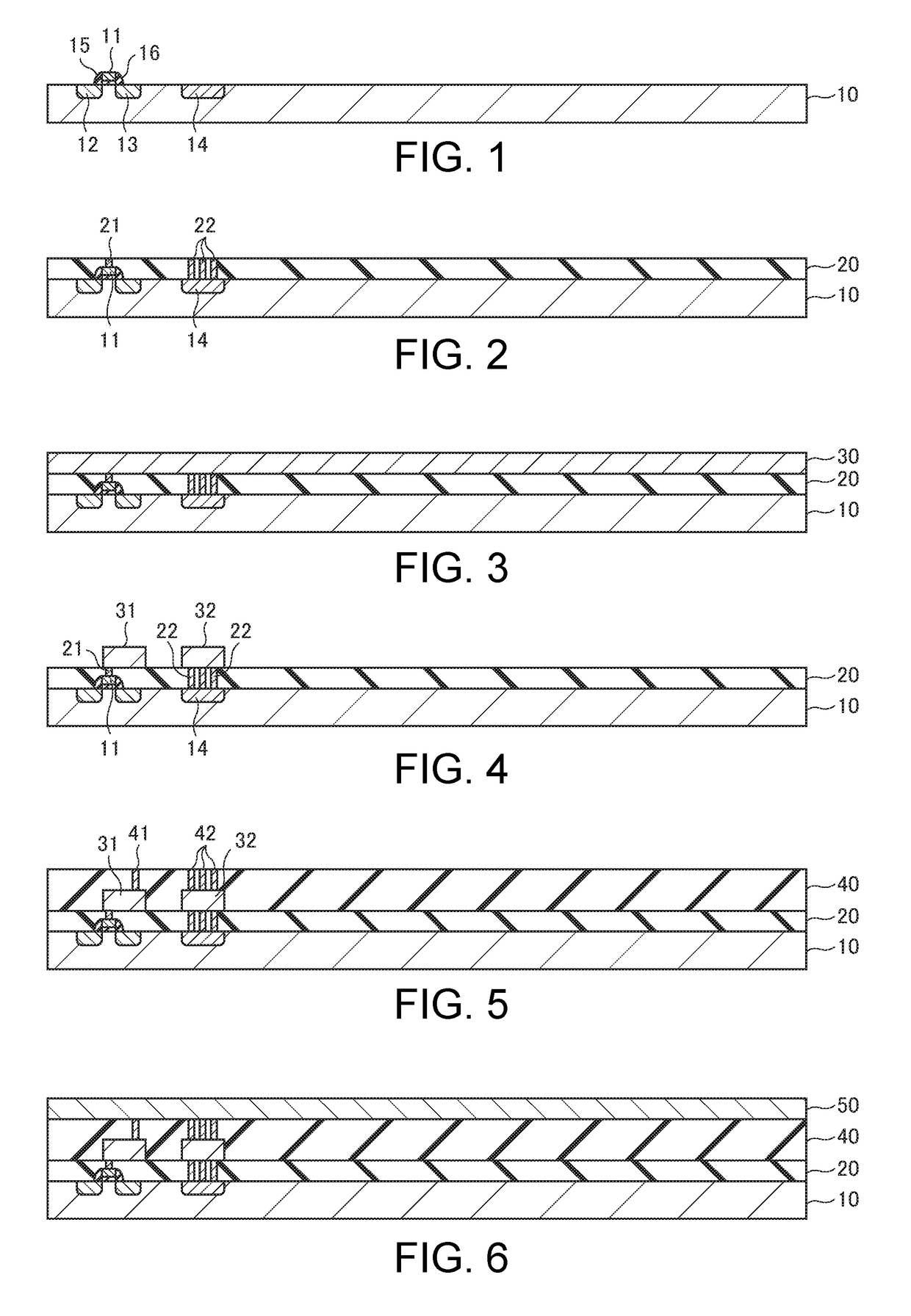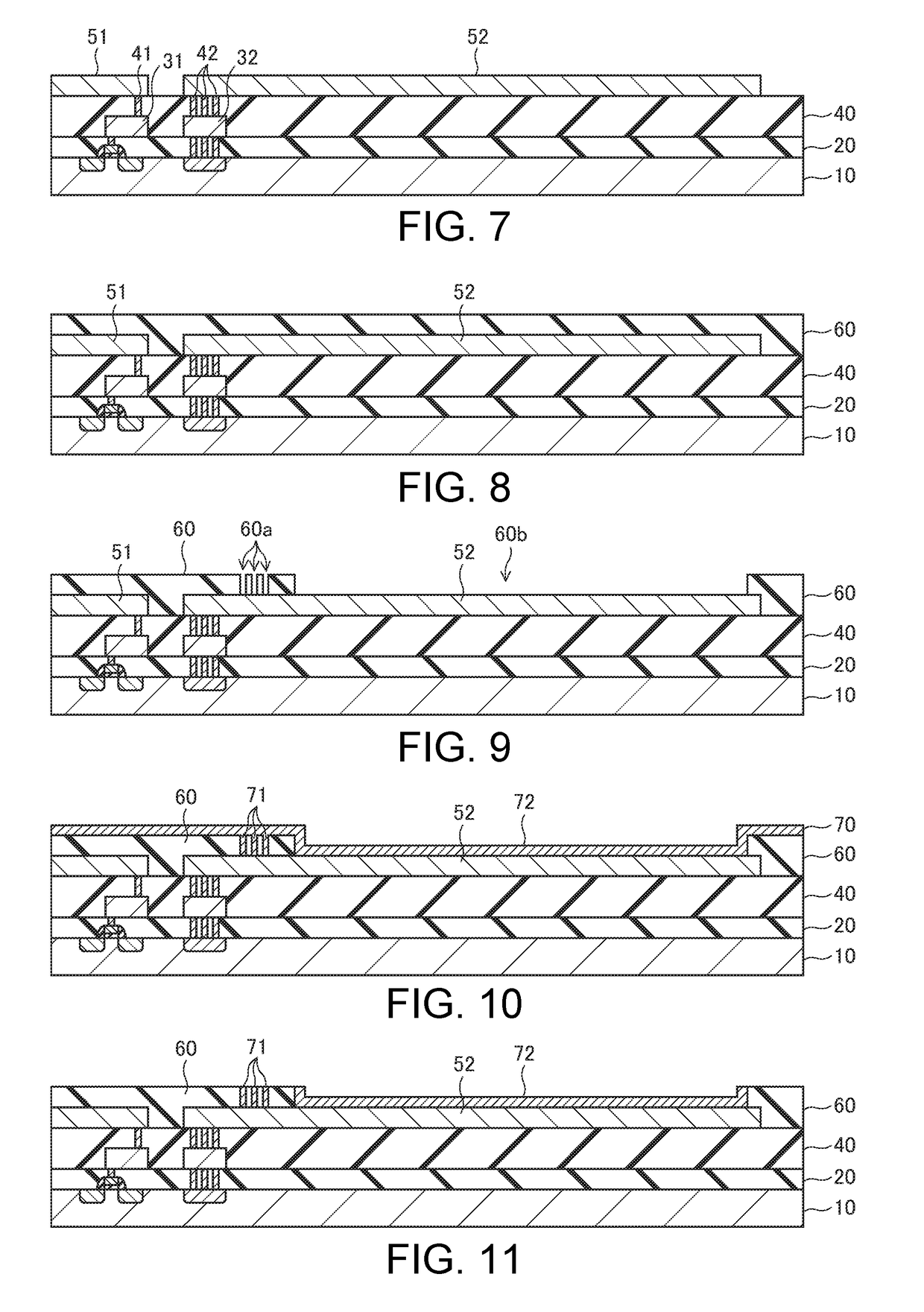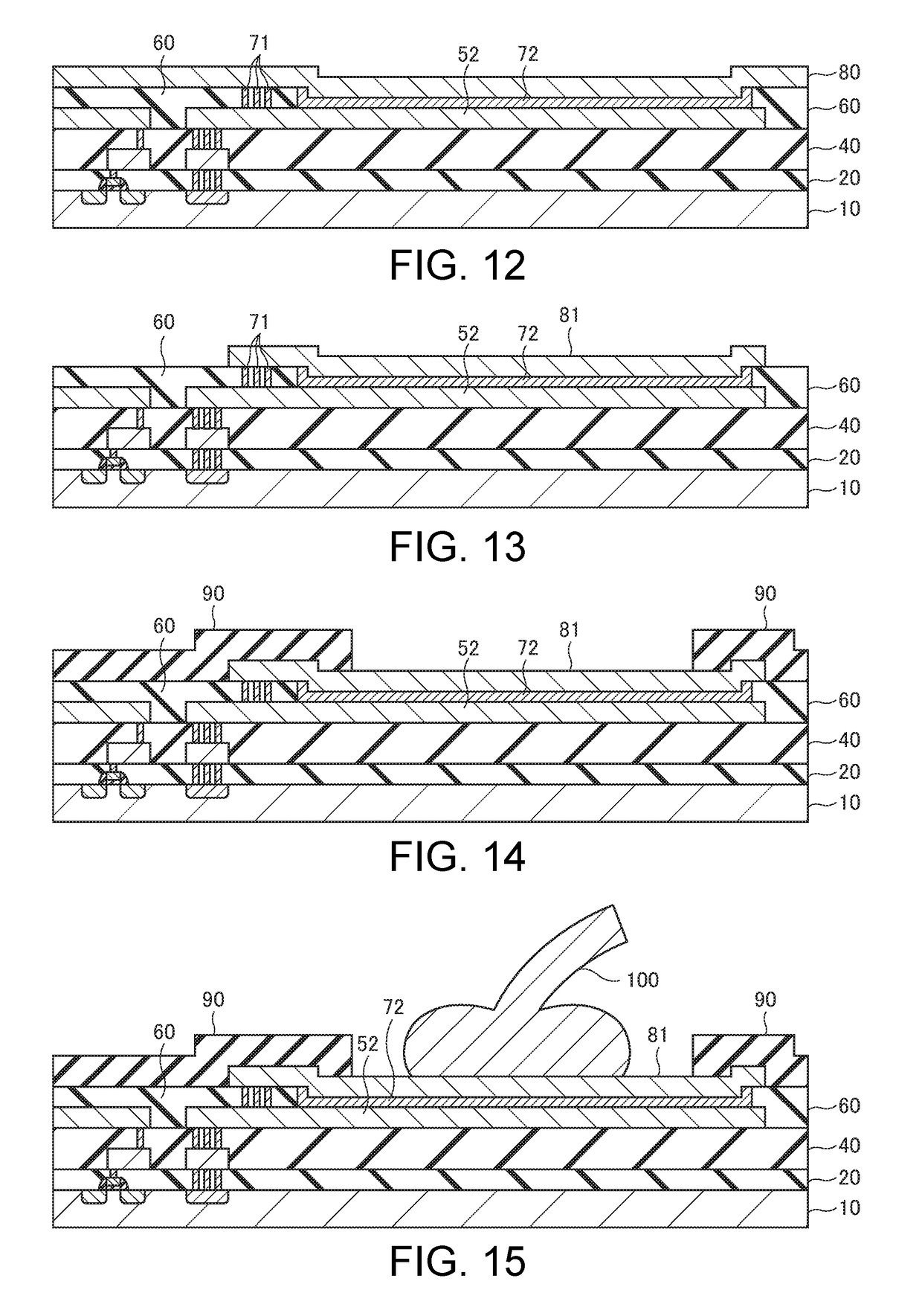Semiconductor device and manufacturing method thereof
a technology of semiconductor devices and manufacturing methods, applied in semiconductor devices, semiconductor/solid-state device details, electrical apparatus, etc., can solve the problems of cracking in the bonding pad or the insulating film, etc., to reduce the manufacturing cost of the second pad, the effect of resisting the second pad and enhancing the electrical connection between the first pad and the third pad
- Summary
- Abstract
- Description
- Claims
- Application Information
AI Technical Summary
Benefits of technology
Problems solved by technology
Method used
Image
Examples
Embodiment Construction
[0038]Hereinafter, an embodiment of the invention will be described in detail with reference to the drawings. The same constituent elements are given the same reference numerals, and redundant descriptions are omitted.
[0039]Manufacturing Method of Semiconductor Device
[0040]FIGS. 1 to 15 are cross-sectional views, in a manufacturing process, of a semiconductor device according to one embodiment of the invention. In the following, a case where a semiconductor device including an N-channel MOS transistor is manufactured using a P-type semiconductor substrate will be described as an example.
[0041]In a first step, as shown in FIG. 1, a gate electrode 11 is formed on a semiconductor substrate 10 via a gate insulating film, the gate electrode 11 being patterned using a photolithography method. For example, the semiconductor substrate 10 is made of silicon (Si) including P-type impurities such as boron (B) ions or the like. The gate insulating film is made of silicon oxide (SiO2) or the lik...
PUM
| Property | Measurement | Unit |
|---|---|---|
| thickness | aaaaa | aaaaa |
| Young's modulus | aaaaa | aaaaa |
| Young's modulus | aaaaa | aaaaa |
Abstract
Description
Claims
Application Information
 Login to View More
Login to View More - R&D
- Intellectual Property
- Life Sciences
- Materials
- Tech Scout
- Unparalleled Data Quality
- Higher Quality Content
- 60% Fewer Hallucinations
Browse by: Latest US Patents, China's latest patents, Technical Efficacy Thesaurus, Application Domain, Technology Topic, Popular Technical Reports.
© 2025 PatSnap. All rights reserved.Legal|Privacy policy|Modern Slavery Act Transparency Statement|Sitemap|About US| Contact US: help@patsnap.com



